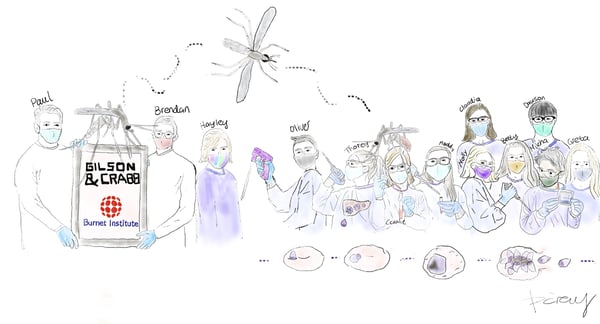
PHERAstar FSX
Powerful and most sensitive HTS plate reader
Malaria is a parasitic disease caused by the species Plasmodium which infects red blood cells and is transmitted from human to human by the mosquito. This disease impacts many millions of people every year, resulting in approximately half a million deaths, mainly in children (WHO).
Antimalarial drugs have been the main method to treat malaria, though the ever-evolving Plasmodium parasites have become resistant over time, and have evolved ways to evade the immune response. Once inside a red blood cell, the malarial parasite produces proteins that dock on exterior of the cell, essentially allowing cells to adhere to blood vessels, allowing the parasite to escape the human immune system and splenic clearance.
To reduce the clinical burden of malaria, and reach this ‘zero’ target, the global scientific community have employed various research strategies to prevent and treat this disease. This has included research such as further understanding parasite survival in host red blood cells, host immunity for potential vaccine development, and the identification of new drug targets for therapy.
Thorey Jonsdottir, a research scientist in the Malaria Virulence and Drug Discovery Group at the Burnet Institute in Melbourne, Australia. The group, headed by Professor Brendan Crabb and Dr Paul Gilson, is interested in the survival strategies of the parasite during its asexual blood stage, which is responsible for the clinical manifestations of malaria. This includes: how the parasites invade the red blood cell, how the parasites modify the red blood cell through protein export and, how the parasites egress from the red blood cell.

Thorey explains: “We have introduced an exported bioluminescence reporter into our Plasmodium falciparum parasite lines, which allows us to study various biological functions of the parasite. This information can then be used to target the parasite, which is the ultimate goal.”
“Invasion, red blood cell modification and egression from the cell are essential for parasite survival and therefore, present an opportunity for chemopreventive strategies. The bioluminescence reporter allows us to study biological processes in a high-throughput plate format and this is very beneficial when testing hundreds of chemical compounds, or many parasite lines, simultaneously.
Thorey and the team use BMG LABTECH’s CLARIOstar Plus microplate reader to measure bioluminescence and enjoy the reader’s flexibility and range of unique features available. “The reliability and accuracy of reagent injection, reduces time and pipetting errors from manual intervention. In addition, the multiple shaking options allow us to mix and lyse samples after injection. “We can set the machine to measure samples at set intervals over a period of time, which also reduces labour and human error”, Thorey explained.
The quality of the research from the Malaria Virulence and Drug Discovery group is highlighted by their many publications in leading scientific journals, such as Nature. Here is a small sample of the group’s most recent research, including collaboration with other leading laboratories.

To learn more about the amazing research undertaken by the Burnet Institute and their commitment to eliminating malaria, visit www.burnet.edu.au.
A special thanks to Thorey for her amazing artwork too, featured in this post. She has many talents!
Powerful and most sensitive HTS plate reader
Most flexible Plate Reader for Assay Development
Flexible microplate reader with simplified workflows
Upgradeable single and multi-mode microplate reader series